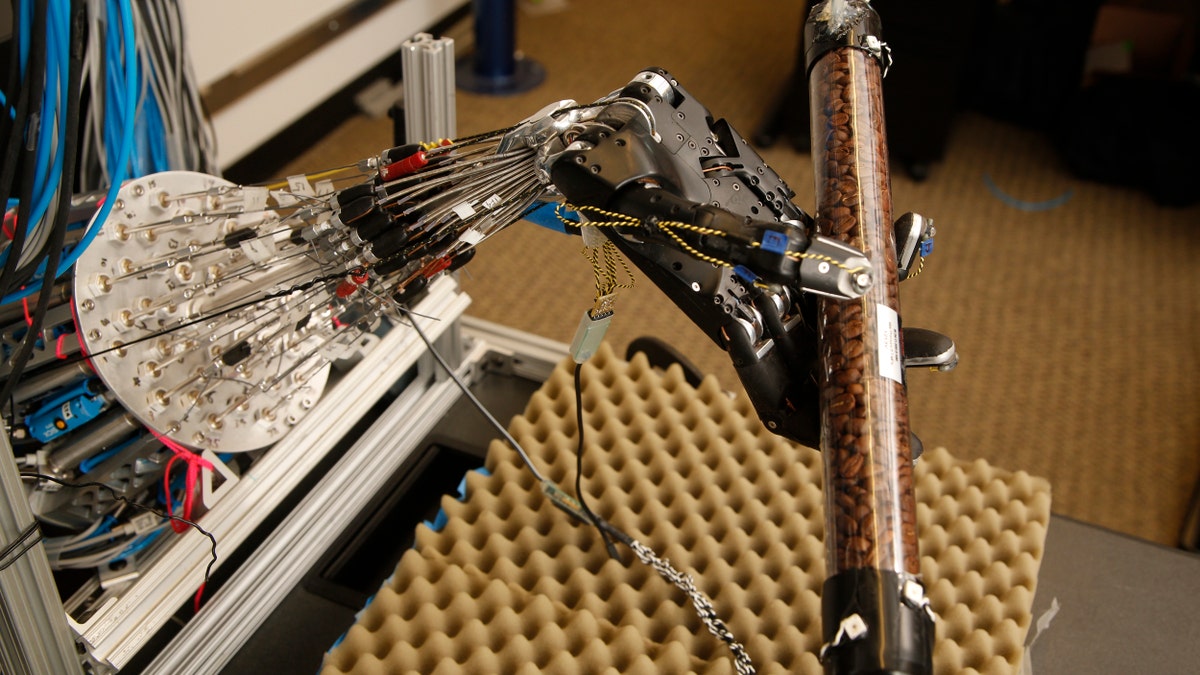Cool robot hand learns as it goes

(University of Washington)
It's a device that brings to mind the bodyless hand, Thing, from The Addams Family: a human-like robotic hand, engineered by scientists at the University of Washington, that can learn on its own as it handles a specific task.
The hand has five fingers, tendons, joints, over a hundred sensors, and is capable of moving faster than its human counterpart. In a video the university released, the hand can be seen delicately rotating a tube full of coffee beans-- an activity that the robot can improve iteratively, the university said.
“Hand manipulation is one of the hardest problems that roboticists have to solve,” Vikash Kumar, a doctoral student at the University of Washington and the lead author on a new paper about the robot hand, said in a statement. “A lot of robots today have pretty capable arms but the hand is as simple as a suction cup or maybe a claw or a gripper.”
But besides the impressive dexterity of this robotic hand, which is powered by a pneumatic system and cost about $300,000, machine learning algorithms allow it to learn along the way.
“What we are using is a universal approach that enables the robot to learn from its own movements and requires no tweaking from us,” Emo Todorov, an associate professor at the University of Washington, said.
The next step for the device, the university said, is for the robot hand to not just learn while performing a known task on an object it has worked with before, but to figure out how to manipulate new objects or handle new situations.




















